The Sistine Chapel, the best of Art History
(Italian Version Below*)
I worked here in the Vatican Museums, Temple of Art, for a few years when I was still at university. This is for me a place that holds many dreams. I had a job role that had nothing to do with art history. Life has taught me to see, however, always the “half full” glass. Every day I could admire a magnificent place and flood myself with art.
Whole life and a blog would not be enough to tell the Vatican collections. Today’s task, to tell you about the Sistine Chapel, is truly a challenge.
Can you resume an essential chapter of art history in a few characters?
Of course, you can, it’s a bit what happens on tours of the Vatican Museums. In two hours, tourists want to see everything and know even more and the guide’s working approach makes the difference.
When I worked at the museums, I wandered around closing time in this fantastic world. I walked through the infinite galleries, got inebriated with Raphael’s colors and punctually arrived at the Sistine Chapel.
I found it literally empty, the silence and genius of Michelangelo are something that must be experienced to be fully understood. The great beauty unfolded before my eyes.
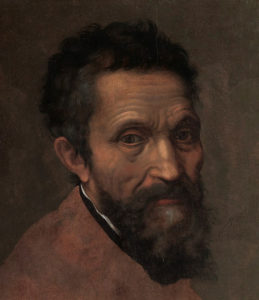
I took advantage of it, sitting 5 minutes and being overwhelmed by the colors, the size. I could only repeat: how was it possible that a man alone did all this ??
And every time I come back, I don’t have an answer, I only have amazement, unbelief, joy for something that will always excite me.
The Sistine Chapel for me and for how I love to explain it to tourists is a beautiful cupcake! You got it right, a cupcake! Michelangelo will also forgive me because he is the cream, the final decoration. I always leave him the place of honor.
Focusing on the pictorial and non-architectural aspects, at least in this article, once we enter the Sistine Chapel, we will have the Last Judgment behind us.
Before us, the pictorial decoration on the side walls is divided into several registers. The lower level with fake curtains, the Stories of Moses and Christ in the central shelf. The portraits of the popes between the windows, ideally supporting the vault.
All this happened at a time before Michelangelo’s arrival, dates between 1481-1482. On August 15, 1483, what was the Pope’s private chapel was inaugurated and dedicated to the Assumption. Sixtus IV Della Rovere sat on the papal throne to whom the name “Sistina” is owed.
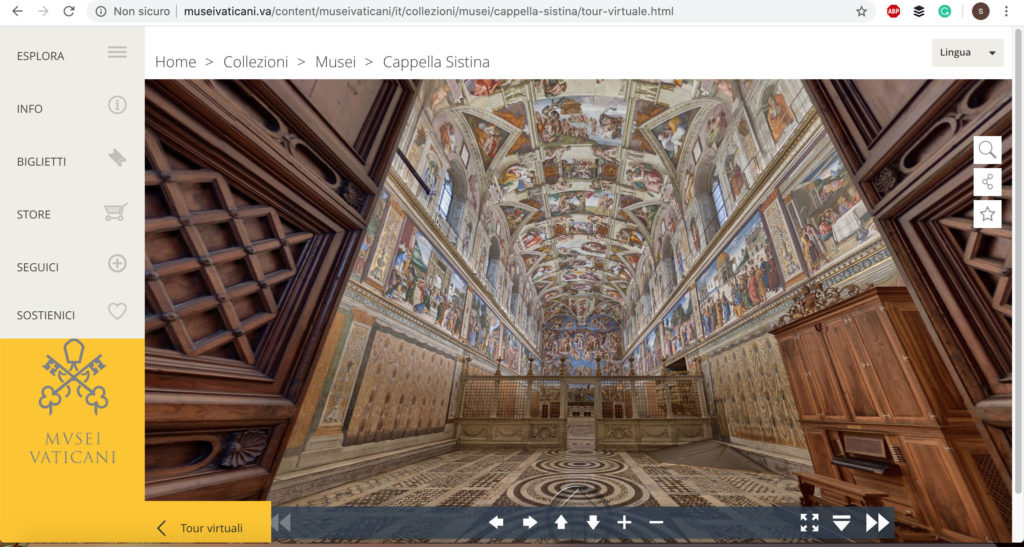
In this first decorative phase, we do not find the name of Michelangelo, but we are spoiled for choice, Sixtus IV calls to Rome the best artists of the moment who were in Florence thanks to his friendship with Lorenzo de Medici, from Perugino to Ghirlandaio, Botticelli, Signorelli, Cosimo Rosselli, and their close collaborators.
A shuddering artistic team comes to fulfill the pontiff’s dreams and does it masterfully.
The Stories of Moses (south wall) and Christ (north wall) unfold as in a beautiful and colorful art book: we are able to identify the main characters because the same colors are used from frame to frame.
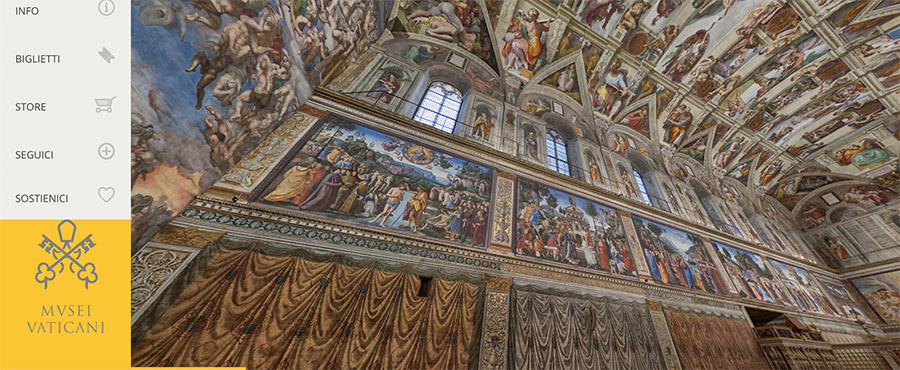
The artists work as in a large team that follows guidelines in order to make drawing fluid and reading easier.
However, each artist does not give up leaving his own touch and this is how, as in a great quiz, we recognize the sweet faces of Botticelli in the box “Facts of the life of Moses”, the lightness of the skin tones in the “Handing over the keys” by Perugino who they make one think of Raphael his adept, the perfect description of the physiognomic traits in the “Vocation of the Apostles” with Ghirlandaio master of a young Michelangelo in Florence.
After reading the stories of Moses and Christ, and passing the portraits of the popes, at first, when the Sistine was inaugurated in 1483 our gaze would have met a starry sky to cover the vault, the work of Pier Matteo d ‘ Amelia.
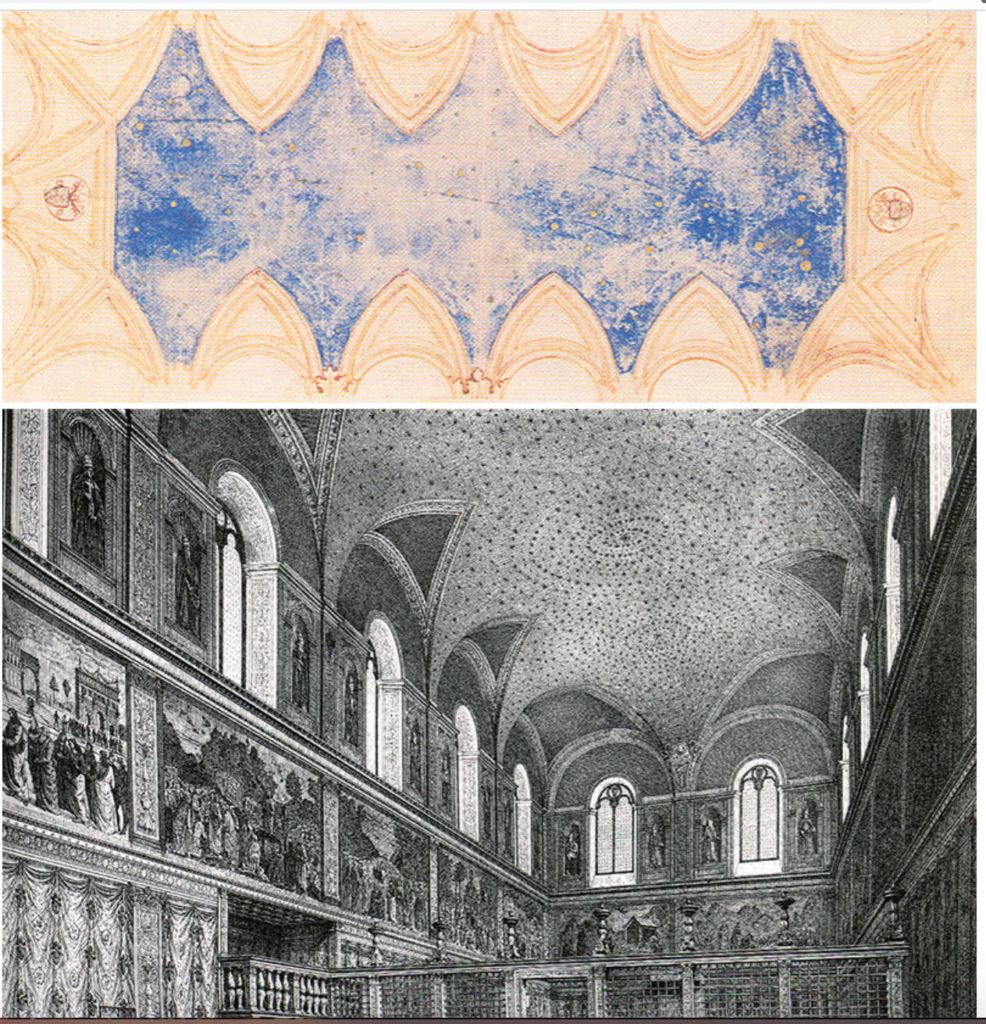
In 1508 Julius II calls Michelangelo to modify the decoration of the vault. The artist was 33 years old and did not need any introduction or sponsor. The world had already been shocked by his David in Florence and the Vatican Pietà made when he was only 23 years old.
Michelangelo will experience the decoration of the vault as a moment of growth and existential turbulence will affirm several times: “I am not a painter, I am a sculptor”, he will note his disturbances in diaries, letters, and sketches, to him “that room looked like a barn and he would never have done a good job. “
The Pope had asked him to paint the 12 Apostles on the entire vault and Michelangelo had immediately brought out his character for a decoration that seemed bare to him. Julius II surrendered and said, “you can do what you want”.
The artist from Arezzo works night and day, bends over, twists fall ill on a scaffolding that he creates himself and in 4 years reveals his genius to the world again.
The Sistine is unveiled in 1512, Michelangelo had imagined a broken perspective and placed at the center of the vault 9 scenes of Genesis, surrounded by the great seers, by the Sibyls, who anticipated the arrival of human Salvation, by the prophets of the Old Testament, and from the Ancestors of Christ as the Gospel of Matthew describes them.
In the pendentives, there are all the episodes concerning the intervention of God for the chosen people like David who kills Goliath and Judith with the head of Holofernes and at the end of this show of colors and characters, there is what could be the signature of Michelangelo, the Ignudi (decorative nude figures). No one before him in the history of art had thus investigated the human body.
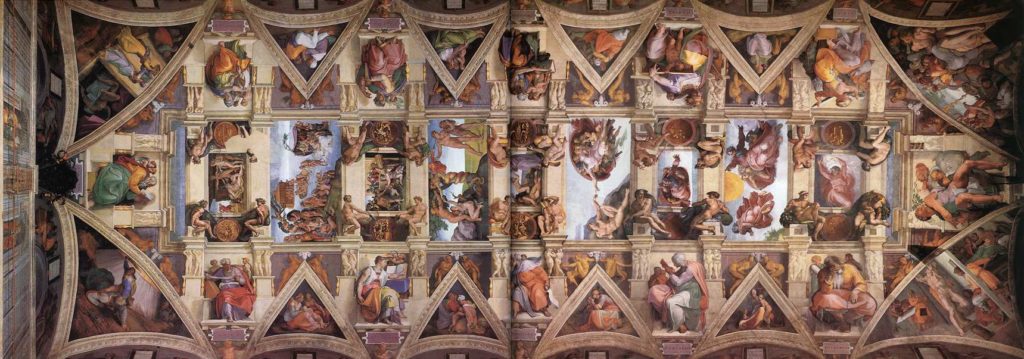
The Sistine Chapel, that huge barn room, will be the sum of Michelangelo’s artistic career who will return here in a period from 1536-1541 with another Pope Paul III Farnese and another great challenge, the Last Judgment.
But this is another story that I will tell you!
Maybe not everyone knows that … Inside the Sistine Chapel, there is a ban on taking pictures/videos. The images that accompany this article are simply screenshots taken from the official website and from the virtual tour.
From Youtube: The Sistine Chapel and Elizabeth Lev
All rights reserved *
Ho lavorato qui nel Tempio dell’Arte dei Musei Vaticani, per alcuni anni quando ero ancora all’università.
E’ questo per me un luogo che racchiude tanti sogni. Avevo un ruolo lavorativo che non aveva nulla a che vedere con la storia dell’arte. La vita mi ha insegnato a vedere, però, sempre il bicchiere “metà pieno”. Ogni giorno potevo ammirare un luogo magnifico ed inondarmi di arte.
Non basterebbe una vita intera ed un blog per raccontare le collezioni vaticane.
Il compito odierno, di parlarvi della Cappella Sistina, è davvero una sfida. Sintetizzare un capitolo imprescindibile della storia dell’arte, in pochi caratteri, si può? Certo che si può, è un po ciò che accade nei tour ai Musei Vaticani. In due ore, i turisti vogliono vedere tutto e conoscere ancora di più e l’approccio lavorativo della guida, fa la differenza.
Quando lavoravo ai Musei, gironzolavo ad orario di chiusura in questo fantastico mondo. Percorrevo le infinite gallerie, mi inebriavo dei colori di Raffaello e giungevo puntualmente in Cappella Sistina.
La trovavo letteralmente vuota, il silenzio ed il genio di Michelangelo vanno vissuti per poter essere compresi a pieno. La grande bellezza si dispiegava dinanzi ai miei occhi.
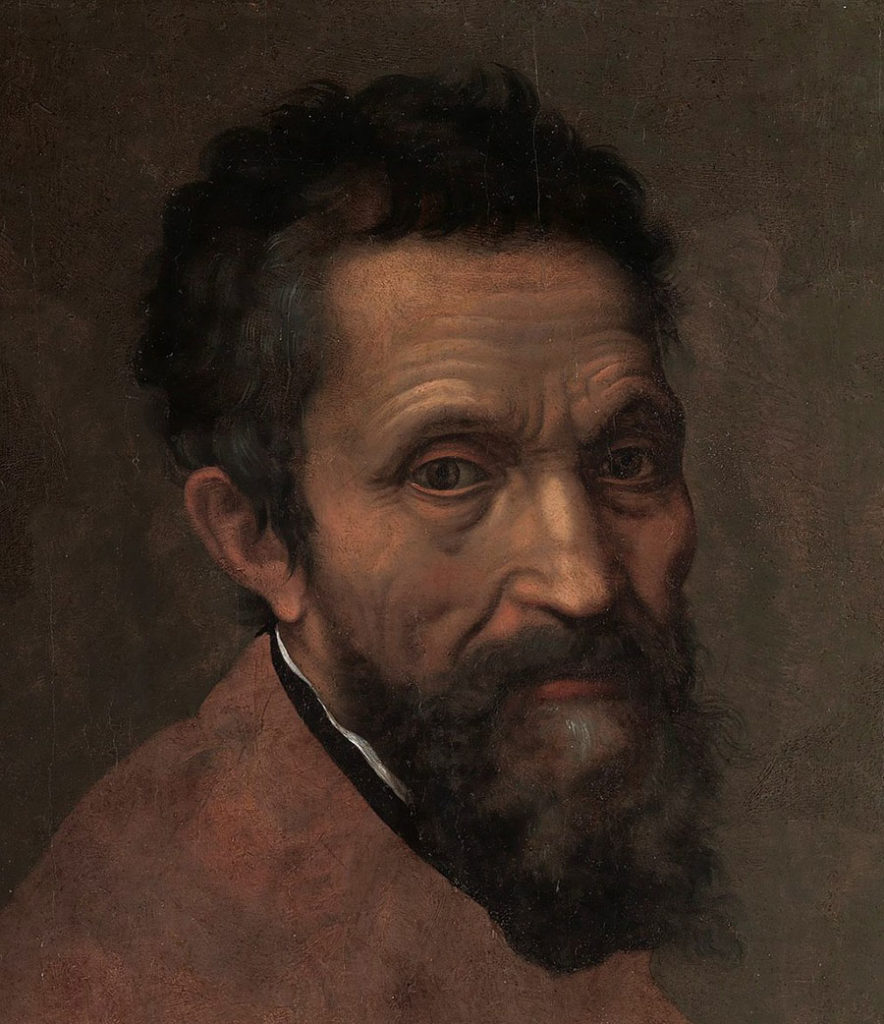
Ne approfittavo, sedendomi 5 minuti e facendomi travolgere dai colori, dalla grandezza. Riuscivo solo a ripetere: come sia stato possibile che un uomo da solo abbia realizzato tutto ciò?? Ed ogni volta che torno, non ho una risposta, ho solo lo stupore, l’incredulità, la gioia per qualcosa che mi emozionerà sempre.
La Cappella Sistina per me e per come amo spiegarla ai turisti è un bellissimo cupcake! Avete capito bene, un cupcake! Michelangelo mi perdonerà anche perchè è proprio lui la panna, la decorazione finale. A lui lascio sempre il posto d’onore.
Soffermandoci sull’aspetto pittorico e non architettonico, almeno in questo articolo, una volta entrati nella Cappella Sistina, avremo alle nostre spalle il Giudizio Universale.
Dinanzi a noi la decorazione pittorica sulle pareti laterali è divisa in più registri. Il livello più basso con finti tendaggi, le Storie di Mosé e di Cristo nel ripiano centrale. I ritratti dei pontefici tra le finestre, a sostenere idealmente la volta.
Tutto ciò è avvenuto in un momento precedente l’arrivo di Michelangelo, si data tra il 1481-1482. Il 15 Agosto del 1483 quella che era la Cappella privata del papa fu inaugurata e dedicata all’Assunta. Sul soglio papale sedeva Sisto IV della Rovere a cui si deve il nome di “Sistina”.
Non troviamo in questa prima fase decorativa, il nome di Michelangelo, ma abbiamo solo l’imbarazzo della scelta, Sisto IV chiama a Roma i migliori artisti del momento che si trovavano a Firenze grazie alla sua amicizia con Lorenzo de Medici, da Perugino, a Ghirlandaio, Botticelli, Signorelli, Cosimo Rosselli, ed i loro stretti collaboratori.
Un’equipe artistica da far rabbrividire arriva ad esaudire i sogni del pontefice e lo fa magistralmente. Le Storie di Mosè (parete sud) e di Cristo (parete nord) si dispiegano come in un bellissimo e coloratissimo libro di arte: riusciamo ad identificare i personaggi principali perchè vengono utilizzati gli stessi colori di riquadro in riquadro.
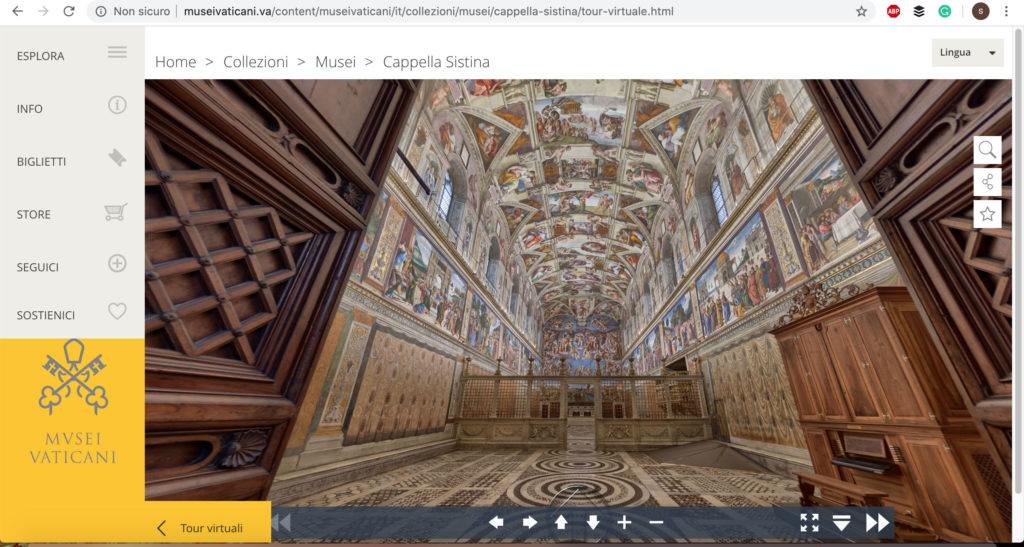
Gli artisti lavorano come in un grande team che segue delle linee guida così da rendere il disegno fluido e la lettura agevolata.
Ogni artista però non rinuncia a lasciare il proprio tocco ed è così che come in un grande quiz, riconosciamo i volti soavi di Botticelli nel riquadro “Fatti della vita di Mosè”, la leggerezza degli incarnati nella “Consegna delle chiavi” del Perugino che ci fanno pensare a Raffaello suo adepto, la descrizione perfetta dei tratti fisiognomici nella “Vocazione degli Apostoli” con Ghirlandaio maestro di un giovane Michelangelo a Firenze.
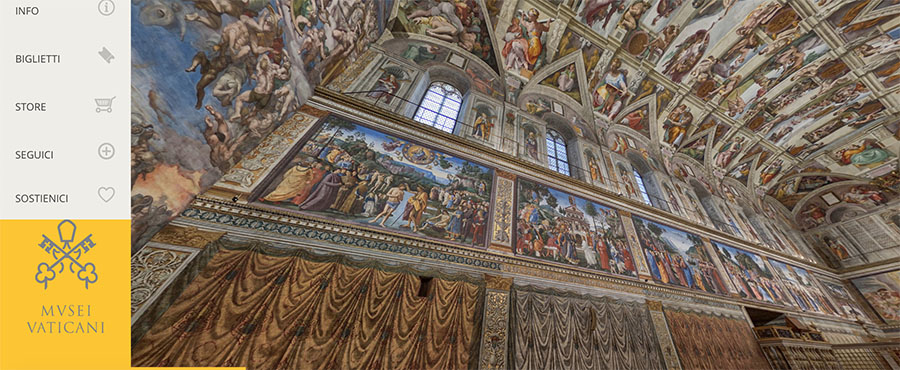
Dopo aver letto le storie di Mosè e di Cristo, e superato i ritratti dei pontefici, in un primo momento, quando ovvero la Sistina verrà inaugurata nel 1483 il nostro sguardo avrebbe incontrato un cielo stellato a ricoprire la volta, opera di Pier Matteo d’Amelia.
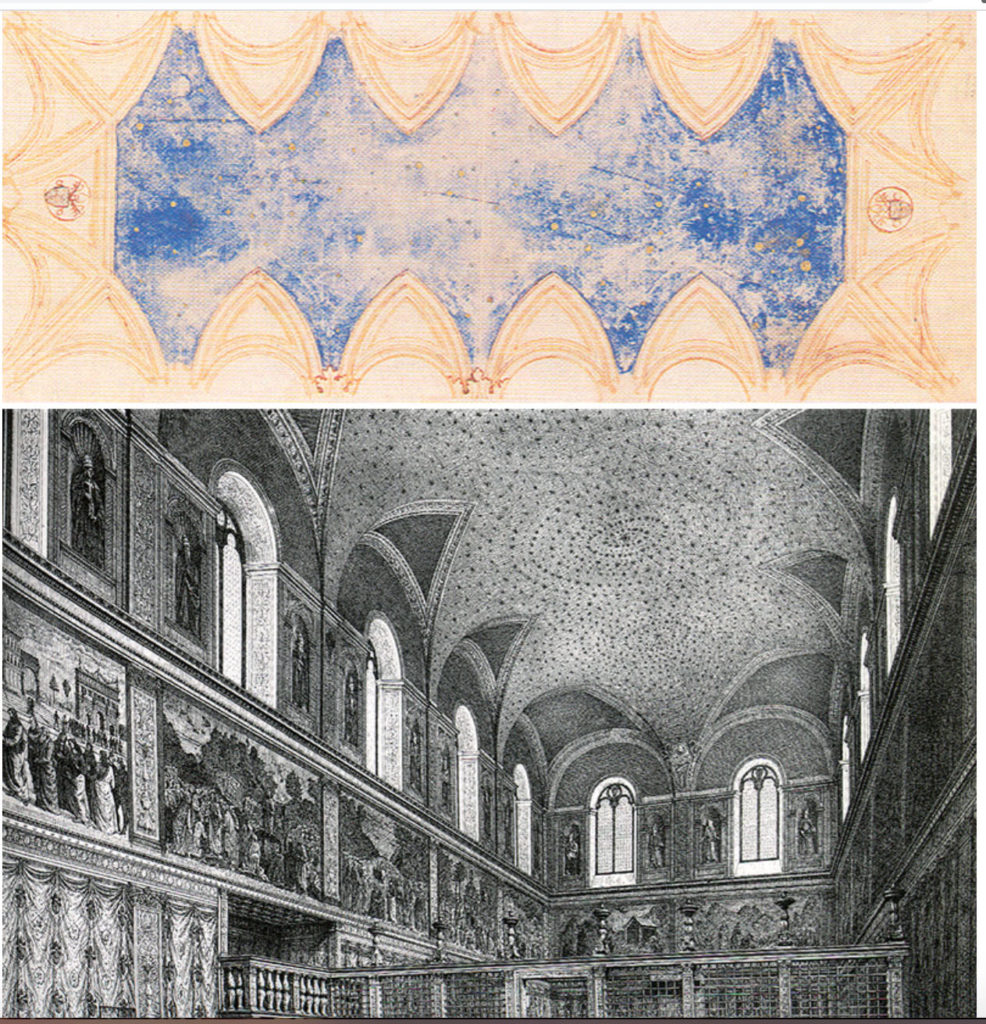
Nel 1508 Giulio II chiama Michelangelo per modificare la decorazione della volta. L’artista aveva 33 anni e non aveva bisogno di presentazioni o sponsor. Il mondo era stato già sconvolto dal suo David a Firenze e dalla Pietà Vaticana realizzata quando aveva solo 23 anni.
Michelangelo vivrà la decorazione della volta come un momento di crescita e turbolenza esistenziale affermerà più volte: “io non sono un pittore, io sono uno scultore”, annoterà i suoi turbamenti in diari, lettere e schizzi, a lui “quello stanzone sembrava un granaio e non avrebbe mai fatto un buon lavoro”.
Il Papa gli aveva chiesto di dipingere sull’intera volta i 12 Apostoli e Michelangelo aveva subito fatto emergere il suo carattere per una decorazione che gli sembrava spoglia. Giulio II si arrese e gli disse “puoi fare ciò che vuoi”.
L’artista aretino lavora notte e giorno, si piega, si storce, si ammala su di un ponteggio che crea lui stesso ed in 4 anni mostra nuovamente al mondo il suo genio.
La Sistina è svelata nel 1512, Michelangelo aveva immaginato uno sfondato prospettico e posto al centro della volta 9 scene della Genesi, circondate dai grandi veggenti, dalle Sibille, che hanno anticipato l’arrivo della Salvezza umana, dai profeti dell’Antico Testamento, e dagli Antenati di Cristo come li descrive il Vangelo di Matteo.
Nei pennacchi ci sono tutti gli episodi inerenti l’intervento di Dio per il popolo eletto come Davide che uccide Golia e Giuditta con la testa di Oloferne ed a chiusura di questa spettacolo di colori e personaggi c’è quella che potrebbe essere la firma di Michelangelo, gli Ignudi. Nessuno prima di lui nella storia dell’arte aveva indagato così il corpo umano.
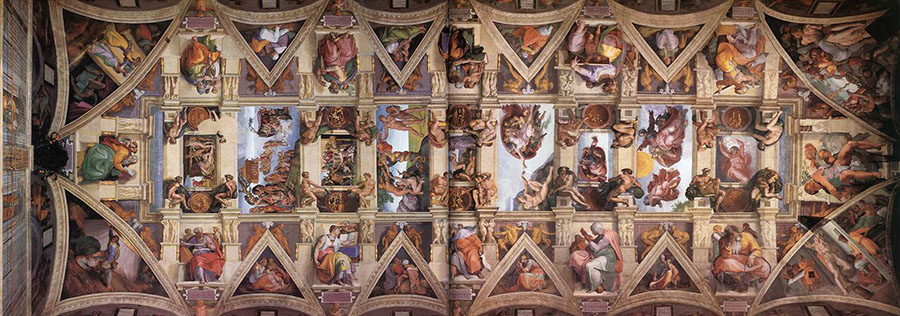
La Cappella Sistina, quell’enorme stanzone granaio, sarà la summa della carriera artistica di Michelangelo che qui tornerà in un periodo che va dal 1536-1541 con un altro pontefice Paolo III Farnese ed un’altra grande sfida, il Giudizio Universale.
Ma questa è un’altra storia che vi racconterò!
Forse non tutti sanno che..All’interno della Cappella Sistina vige il divieto di scattare fotografie/video. Le immagini che corredano questo articolo sono semplicemente degli screenshot ricavati dal sito ufficiale e dal virtual tour.
Sostieni #laculturachevince, aiuta la condivisione.
Tutti i diritti sono riservati. E’ vietata qualsiasi utilizzazione, totale o parziale, dei contenuti inseriti nel presente portale, ivi inclusa la memorizzazione, riproduzione, rielaborazione, diffusione o distribuzione dei contenuti stessi mediante qualunque piattaforma tecnologica, supporto o rete telematica, senza previa autorizzazione scritta di Selenia Morgillo.
2 Replies to “The Sistine Chapel, the best of Art History”
Doy gracias a Dios por darme la dicha y gran bendición de haber disfrutado de tales maravillas. Incomparable!!
No photo, no photo! 🙂